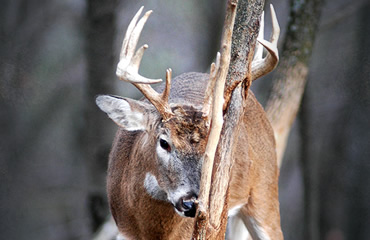Everyone gets excited about a big, gnarly buck rub. Evidence that a rut-crazed bruiser buck is on the prowl helps us get out of bed at 3:30 a.m., and it keeps us in a stand on cold, boring days without deer sightings.
On the other hand, you’ve probably read in Buckmasters magazine that rubs don’t mean a whole lot in terms of scoring on a particular buck. The presence of a fresh rub is not, by itself, enough of an indicator to cause you to abandon all your other scouting-based stand locations.
Rub lines, on the other hand, do offer some information that can help paint a clearer picture of that diligent scouting.
When you find a rub line, look for a pattern regarding which side of the trees is being rubbed. If the west side of the trees are being rubbed, you can assume the buck was heading in an easterly direction, etc.
Knowing the direction of the buck’s travel can help you determine where to set up to ambush him, as well as whether he is entering or exiting a key area as he makes his rubs.
This can even tell you if the rubs are made in the evenings, mornings, night or day as the buck is traveling to or from his bedding area, feeding area or a transition zone between the two.
They’re also great places to set up trail cameras. Why guess about a buck’s travel routes when you can get a visual confirmation.
If you happen upon a previous year’s rub line, or you don’t find it until after the hunting season, mark it on a map. There’s a good chance the same buck, or others, will use that area again next year.
Read Recent Tip of the Week:
• It’s Deer Hunting, Not Deer Seeing: Create setups that not only put you where the deer is, but also allow you to draw your bow or make a relaxed gun shot.




.png)